This is an interesting story of a house that was built before Syracuse became a city. In January of 2012, my friend at The Post-Standard, Dick Case (who is now a volunteer at the Onondaga Historical Association), asked me a question in an email: “Pam: I got an interesting document in the mail today. It’s a two-sided card about something called “The Lyons Settlement’ of Syracuse, about the family of William Lyons, who settled in “a little cottage on West Adams Street” between 1854 and 1909. Does that ring any bells with you? My 1914 city directory lists an “Anna E. Lyons” at 214 W. Adams in that year. DC”
As I did with all of Dick Case’s requests when he worked for the Syracuse The Post-Standard, I went right to our Research Center and rounded up everything I could on The Lyons Settlement, William and his wife Harriet, and their daughter, Anna E. Lyons.
This resulted in my finding the booklet Home Beautiful: The Transition of a Shabby House, which starts out “In the Year 1834 [sic], when Syracuse was a country village, this “Shabby House” was built.” Above 1834 is the very familiar handwriting of Richard Wright, as follows: “1838 by Aaron Hoyt (#10 Baker-’51)-2Br147,” which interpreted means, “In the Year 1838, when Syracuse was a country village, this “Shabby House” was built by Aaron Hoyt per Bruce’s “Onondaga,” Vol. II, pg. 147, and such house was found listed at 10 Baker Street in the 1851 directory.”

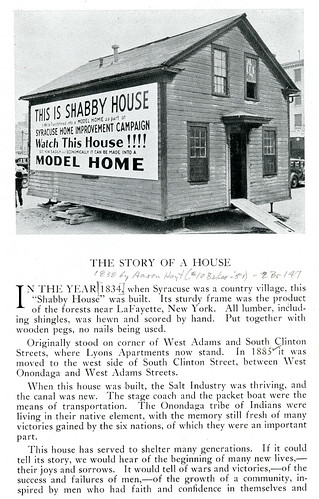
Aaron Hoyt? Well, I have an ancestor named Aaron Hoyt; in fact, he was my four great’s grandfather. But what was he doing in Syracuse? He was supposed to be living in Sentinel Heights. So I asked another one of my good friends, Mr. Roy Dodge, Town of LaFayette Historian, emeritus, if this could possibly be my Aaron Hoyt. He confirmed that indeed it was.
Now my research became very personal. And here’s what I found in OHA’s research center and archives:
My great, great, great, great grandfather, Aaron Hoyt, who lived in East Hill, now Sentinel Heights, built a home in the Village of Syracuse in 1838. According to the booklet Home Beautiful: The Transition of a Shabby House, Aaron Hoyt built his 20’ x 24’ home from wood most likely from his land at Sentinel Heights. All lumber, including shingles, was hewn and scored by hand. The house was put together with wooden pegs, and no nails were used.
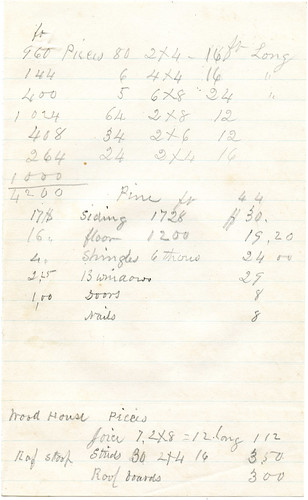
This was in Aaron Hoyt’s diary, and it may be part of his plan for his 1838 home.
According to Newton King, who also was a Town of LaFayette Historian, Aaron Hoyt was a carpenter who also helped build some of the larger buildings in the Village of Syracuse at the time.
Aaron’s house was built on lot 4 of block 120, which was at the corner of West Adams Street and Baker Street (now Clinton Street). (Deed of house and lot in Syracuse, Block 120, Lot 4, recorded in Onondaga County Deeds Book 180, page 39, January 1, 1845, Moses Burnet to Aaron Hoyt.) I don’t know why the house was built in 1838 and there wasn’t a deed for the land until 1845.
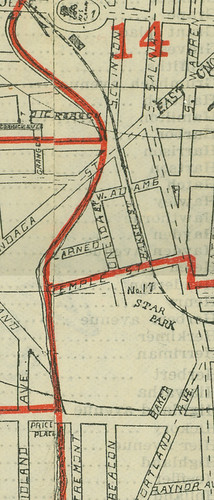
1890 Map showing Baker Street and West Adams Street

Anna E. Lyons crayon drawing from her journal, 1909, showing the homes built on West Adams street, including Aaron Hoyt’s home in the mid-right foreground. A newspaper caption reads “Fourteenth Ward in 1854, Old Crayon Showing the Old Sixth Ward from Baker Street to Stearns Factory, With Binghamton Depot to the Right.”

Inside The Lyons Settlement card reads: “Cottage on the corner, first house on Baker Street, built in 1838” which refers to Aaron Hoyt’s house.
Aaron Hoyt died unexpectantly of “ague” in 1847, as noted in his son William Hoyt’s diary – 1847 August 26, “Father & family return to Syracuse, father get down with ague;” September 1 “go to Syracuse & dig Potatoes for father;” September 10, 11, 12 “Father very Sick. Life despaired of. Sick with Summer complaint and Child Fever. Weather variable hot & cold. A sickly season in Syracuse.” September 20 “Aaron Hoyt, Sen. Departed his life this Day at 4 o’clock PM in the full hope of a blessed immortality.” Aaron Hoyt’s wife Sophia (Brooks) Hoyt, had her niece, Miss Mary S. Hoyt, daguerrean artist, move into the home with her for a short time. Later, Sophia Hoyt rented the house out and she moved into an apartment in the Bastable Block. After that, she moved to Lexington, Kentucky with two of her daughters, and died there on 26 August 1872. Aaron and Sophia Hoyt are both buried in the Sentinel Heights Pioneer Cemetery on Lot 21 in the Town of Onondaga.
William Hoyt (son of Aaron Hoyt) continued renting Aaron Hoyt’s house, and in 1880 sold the house and property to Mrs. Wm. Lyons (William Hoyt Diary, 1880. June 1, William Hoyt diary “go Sy, sell House & Lot in Syracuse;” June 4 “go Sy Finish Sale S. Property;” June 4 “Finish sale of the Syracuse Property to Mrs. Wm. Lyon for 2,500$ cash.”)
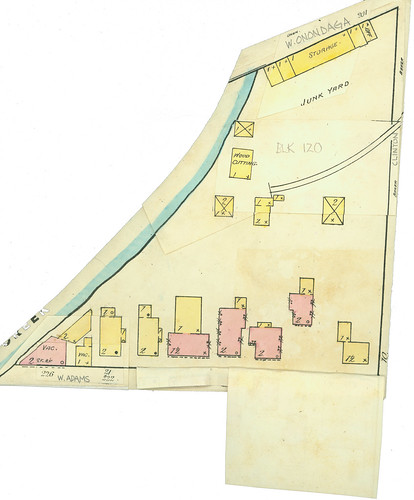
1882 Sanborn Map showing Aaron Hoyt’s home at 10 Baker Street on the corner of West Adams and Baker Street.
In 1885, William Lyons built Lyons Flats on the corner of West Adams Street and Baker Street (Clinton Street), moving from Lot 4 the frame house erected by Aaron Hoyt in 1838 (Richard Wright notes). The little house stood in the back yard of William Lyons’ concrete home he built at 9/212 West Adams Street in 1873.
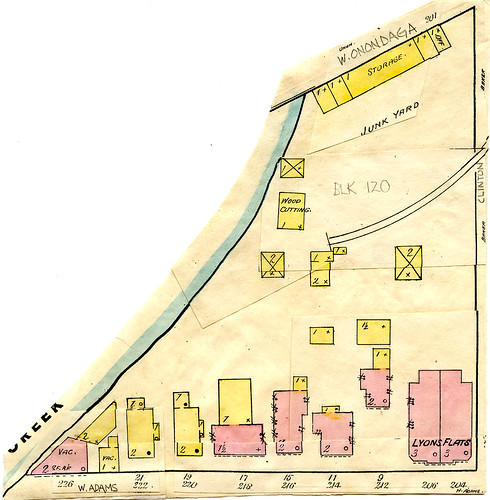
1890 Sanborn Map showing Aaron Hoyt’s home moved behind Wm. Lyons’ concrete home at 9/212 West Adams Street.
Aaron Hoyt’s home sat in back of William Lyons’ concrete house at 9/212 West Adams Street, from 1885 to 1934, during which time it became dilapidated. In 1934, it was given the moniker “Shabby House” by the Syracuse Home Improvement Campaign, a program which was used to create real work for local labor and materials, and moved to James Square (block 89) so people could view the progress.

The house at James Square (James and North Warren Streets, block 89) so people could watch its transformation.
The transformation of Aaron Hoyt’s home was published in the December 1934 issue of Good Housekeeping magazine.
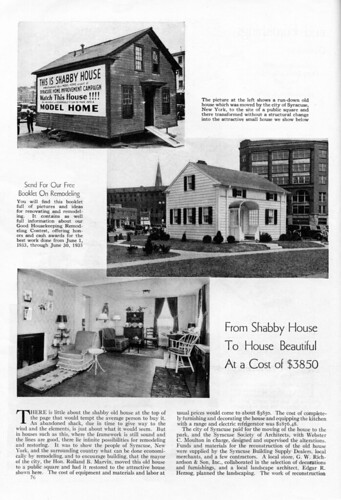
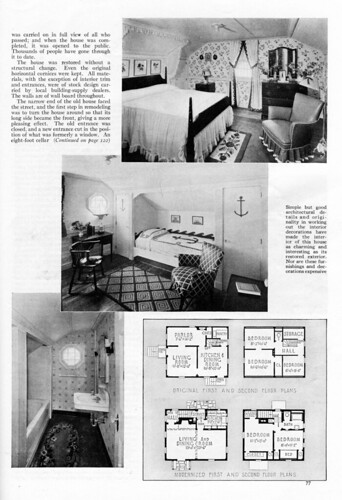

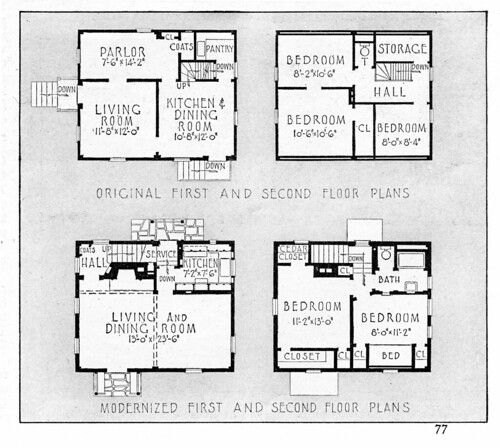
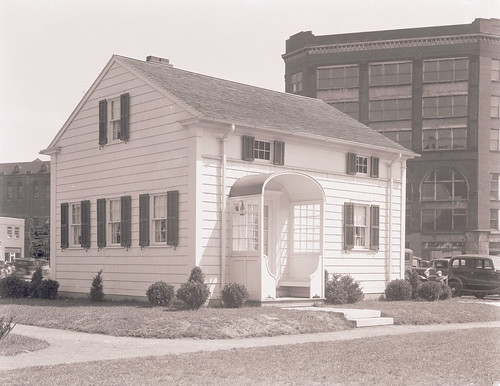
Aaron Hoyt’s home transformed from “Shabby House” to “House Beautiful.”
After its transformation the house was described as a white house with green shutters, and was auctioned off by the city, as per 1934 newspaper articles and photographs. The American Legion bought the house for $1,600. A saleswoman named Vera Klein won the house on a ticket she purchased for a quarter. Vera sold the house to Horatio S. Andrews, and it was moved to 244 Ashdale Ave. in Eastwood.
The house was featured in the Syracuse Herald American on February 15, 1976, which was at that time owned by Dan and Jo-Anne Murphy.
Aaron Hoyt’s house was featured in the Jan/Feb 1997 issue of This Old House magazine and the Syracuse The Post-Standard on January 25, 1997. One of the editors of This Old House magazine found the 1934 booklet in a shop in Seattle and was intrigued with it.

From This Old House magazine, January / February 1997, pg. 25

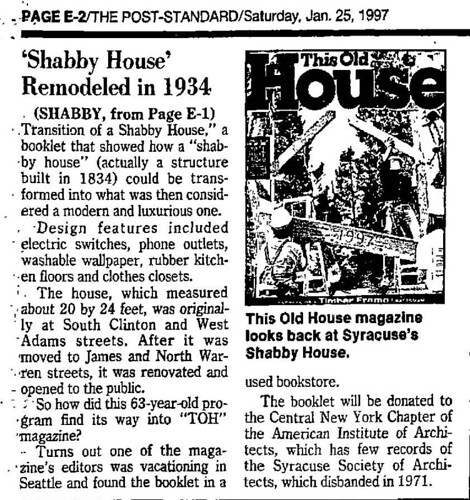
Aaron Hoyt’s house is currently at 244 Ashdale, Syracuse, NY and lived in by Mr. and Ms. David and Cynthia Reitz. It shows that old buildings were built to last and are indeed worth saving.
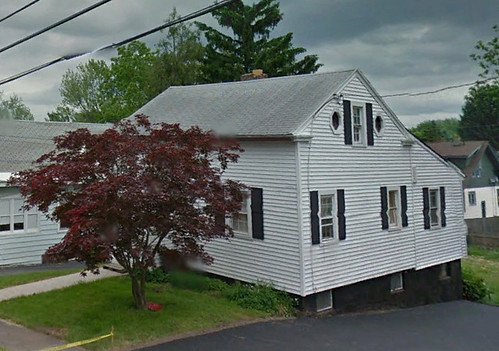

Google Earth’s 2013 views of Aaron Hoyt’s home now located at 244 Ashdale, Syracuse. You can see modifications have been made.
Dick Case and I have been trying to get inside of the house to look at it, especially at the beams in the basement – just to touch the same beams that my four great’s grandfather touched. . . .




















































